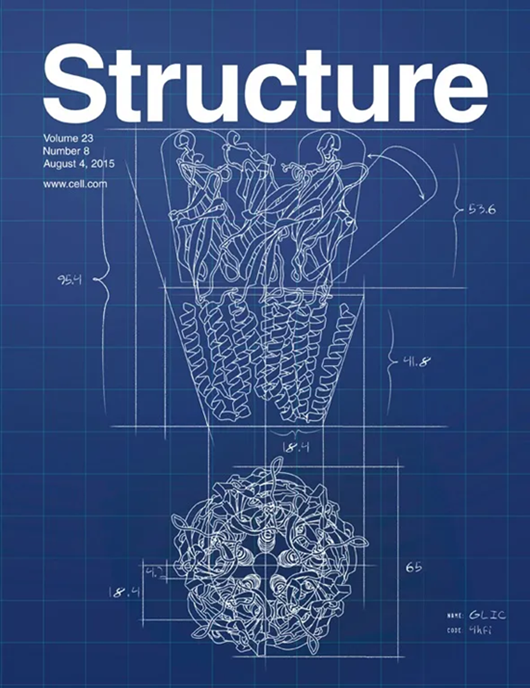通过综合建模和突变预测阐明PTEN构象动力学和磷酸酶调控
IF 4.3
2区 生物学
Q2 BIOCHEMISTRY & MOLECULAR BIOLOGY
引用次数: 0
摘要
PTEN(10号染色体上缺失的磷酸酶和紧张素同源物)是一种主要的肿瘤抑制基因,在癌症条件下经常发生突变或丢失。PTEN是一种双特异性磷酸酶,在质膜(PM)负调控PI3K/AKT/mTOR信号通路。已知其功能调控和细胞定位是由构象驱动的。进入PM是由开放和封闭的PTEN形式磷调节的。然而,阐明其潜在的结构机制仍然是一个开放的研究途径。在这里,我们采用了一种综合结构建模方法,将粗粒度和全原子分子动力学与实验交联质谱相结合。“放松”形式和“紧张”形式之间的构象交换使蛋白质的磷酸酶和C2结构域更紧密地结合在一起,阻断催化位点,并影响PM结合中涉及的环。我们的全长PTEN模型、AlphaMissense和RaSP被用来更好地预测PTEN突变的后果。本文章由计算机程序翻译,如有差异,请以英文原文为准。

Elucidating PTEN conformational dynamics and phosphatase regulation via integrative modeling and mutation prediction
PTEN (Phosphatase and TENsin homolog deleted on chromosome ten) is a major tumor suppressor gene that is frequently mutated or lost under cancerous conditions. PTEN is a dual-specificity phosphatase that negatively regulates the PI3K/AKT/mTOR signaling pathway at the plasma membrane (PM). Its functional regulation and cellular localization are known to be conformationally driven. Access to the PM is phosphoregulated by open and closed PTEN forms. However, clarifying the underlying structural mechanisms is still an open avenue of research. Here, we apply an integrative structural modeling approach, combining coarse-grained and all-atom molecular dynamics with experimental crosslinking mass spectrometry. Conformational exchange between an “eased” form and a “strained” form brings the protein’s phosphatase and C2 domains closer together, blocking the catalytic site, and affecting the loops involved in PM binding. Our full-length PTEN models, AlphaMissense, and RaSP were used to better predict the consequences of PTEN mutations.
求助全文
通过发布文献求助,成功后即可免费获取论文全文。
去求助
来源期刊

Structure
生物-生化与分子生物学
CiteScore
8.90
自引率
1.80%
发文量
155
审稿时长
3-8 weeks
期刊介绍:
Structure aims to publish papers of exceptional interest in the field of structural biology. The journal strives to be essential reading for structural biologists, as well as biologists and biochemists that are interested in macromolecular structure and function. Structure strongly encourages the submission of manuscripts that present structural and molecular insights into biological function and mechanism. Other reports that address fundamental questions in structural biology, such as structure-based examinations of protein evolution, folding, and/or design, will also be considered. We will consider the application of any method, experimental or computational, at high or low resolution, to conduct structural investigations, as long as the method is appropriate for the biological, functional, and mechanistic question(s) being addressed. Likewise, reports describing single-molecule analysis of biological mechanisms are welcome.
In general, the editors encourage submission of experimental structural studies that are enriched by an analysis of structure-activity relationships and will not consider studies that solely report structural information unless the structure or analysis is of exceptional and broad interest. Studies reporting only homology models, de novo models, or molecular dynamics simulations are also discouraged unless the models are informed by or validated by novel experimental data; rationalization of a large body of existing experimental evidence and making testable predictions based on a model or simulation is often not considered sufficient.
 求助内容:
求助内容: 应助结果提醒方式:
应助结果提醒方式:


